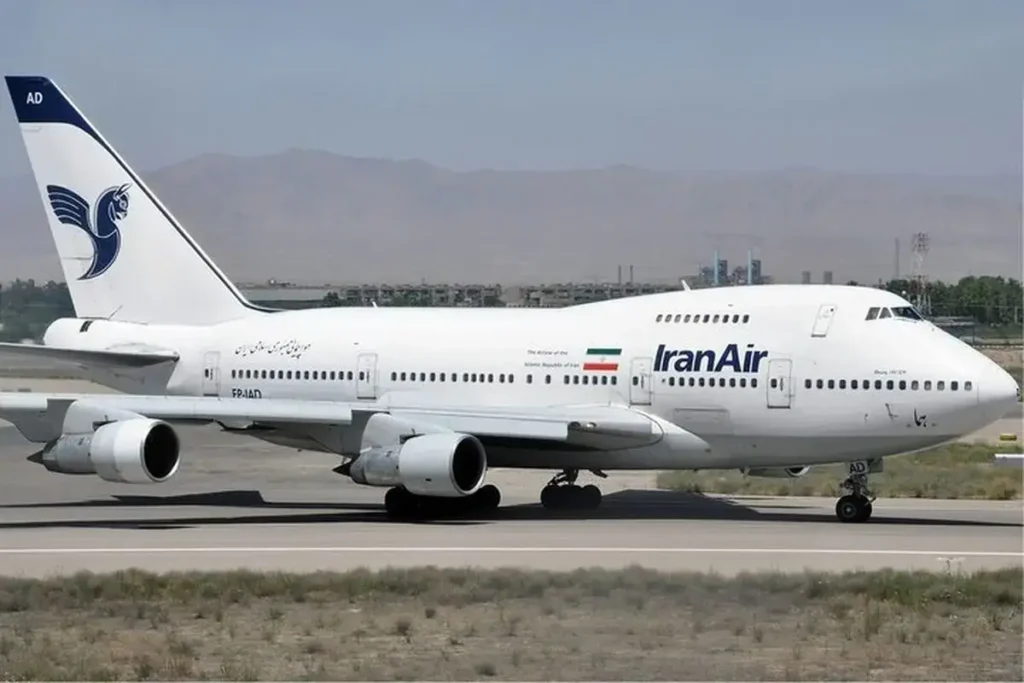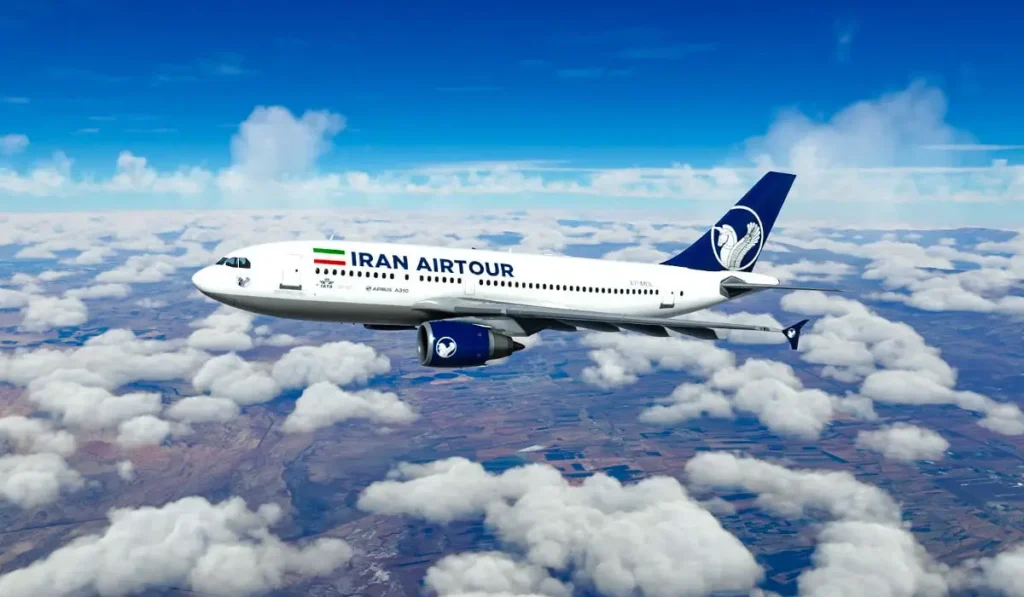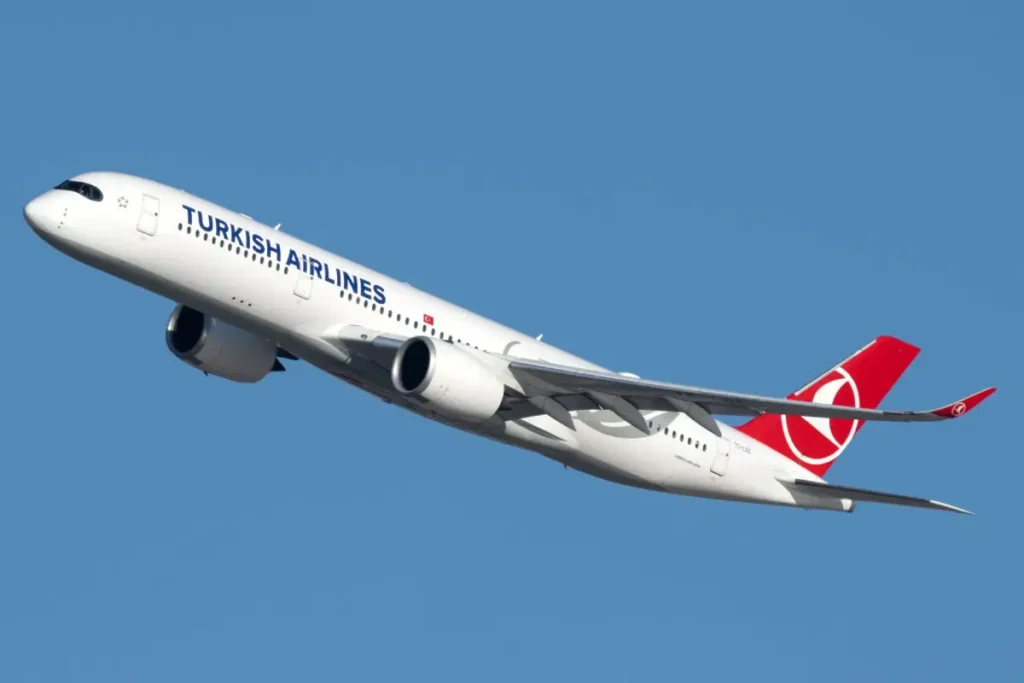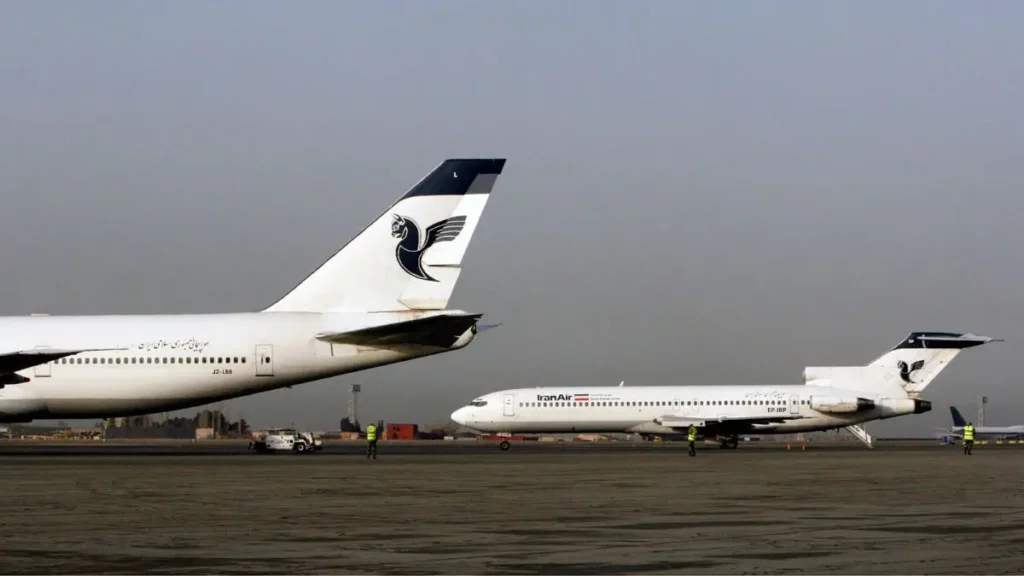Baggage allowance and excess baggage fees are one of the main concerns for passengers on both domestic and international flights. It doesn’t matter where your destination is, if your baggage is over the allowed limit, you will face problems and need to pay extra. This is a bigger issue for students studying abroad, as they often need to carry more luggage.
On every flight, the amount of baggage you can bring depends on the class you choose. For example, if you are flying economy class, you can take less baggage compared to business or first class. The higher your flight class, the more baggage you are allowed to carry.
If you plan to bring a large amount of luggage, you should make sure you have enough information about the baggage rules. Knowing the baggage limits for domestic and international flights will help you calculate possible extra fees. In this article, we’ve gathered all the important points you need to know about this topic.
Baggage Allowance for Iranian Airlines (Domestic and International Flights)
When you fly within Iran, the amount of baggage you can take with you depends on the airline and the class of your ticket. Iranian airlines usually calculate baggage allowance in two ways: by weight or by the number of bags. But in most cases, it’s based on weight. Your travel class (economy, business, or first class) also makes a big difference—if you fly in a higher class, you’re allowed to carry more baggage without extra fees.

To help you understand what to expect, here is the baggage allowance for different Iranian airlines. This information includes both domestic and international flights, depending on what’s available from each airline. If something is not mentioned, it means the airline has not officially announced it.
| Airline | Domestic – Economy (kg) | Domestic – Business (kg) | International – Economy (kg) | International – Business (kg) |
|---|---|---|---|---|
| ATA Airlines | 20 | 30 | 30 (1 suitcase) | 40 (2 suitcases) |
| Aseman Airlines | 20 | 30 | 30 | 30 |
| Iran Air (Homa) | 30 | 40 | 30 | 40 |
| Taban Airlines | 20 | 30 | 30 | 30 |
| Chabahar Airlines | 20 | 20 | Not available | Not available |
| Zagros Airlines | 20 | 30 | 25 | 25 |
| Saha Airlines | 20 | Not announced | Not available | Not available |
| Fly Persia | 20 | Not announced | Not available | Not available |
| Qeshm Air | 10 | 20 | 35 | 45 |
| Caspian Airlines | 20 | 30 | 30 | 30 |
| Kish Air | 20 | 30 | 25 | 30 |
| Mahan Air | 20 | 25 | 30 | 40 |
| Meraj Airlines | 20 | 30 | Not available | Not available |
| Varesh Airlines | 20 | Not available | Not available | Not available |
For an in-depth look at traveling within Iran, read A Comprehensive Guide to Iran’s Domestic Flights.
Zagros Airlines: Baggage Limits
Zagros Airlines sets clear baggage rules for its passengers. For domestic flights, the maximum baggage allowance is 20 kg in economy class and 30 kg in business class. Any baggage exceeding these limits will be subject to extra baggage fees.
For international flights, passengers flying with Zagros Airlines are allowed a maximum of 25 kg of baggage. You can also bring one carry-on bag weighing up to 5 kg onto the plane.
Caspian Airlines: Baggage Allowance
Caspian Airlines offers a straightforward baggage policy for both domestic and international flights. In economy class, passengers are allowed 20 kg of checked baggage, while those flying in business class can bring 30 kg.
On international flights, the maximum checked baggage limit for Caspian Airlines is also 30 kg. Additionally, each passenger is permitted to carry one hand luggage item with a maximum weight of 6 kg.
Qeshm Air: Baggage Policy
Qeshm Air has its own baggage restrictions for passengers. In economy class, the maximum allowed baggage weight is 10 kg, and for business class, the limit is 20 kg. If your baggage exceeds these limits, you will need to pay extra baggage fees.
Taban Airlines: Baggage Rules
Taban Airlines, a private airline in Iran, follows similar baggage rules to many other Iranian carriers. Passengers flying in economy class are allowed 20 kg of checked baggage, while in business class, the limit is 30 kg.
If you have more baggage than allowed, you will be charged an additional fee. This airline adheres to the standard baggage policies common across domestic flights in Iran.
Mahan Air: Baggage Limits
Mahan Air, one of the most popular airlines in Iran, also sets baggage limits for its passengers. In economy class, you can bring 20 kg of checked baggage, and in business class, the limit increases to 25 kg.
Kish Air: Baggage Policy
Kish Air, like many other Iranian airlines, allows 20 kg of checked baggage in economy class and 30 kg in business class. These limits apply to both domestic and international flights with the airline.
Aseman Airlines: Baggage Allowance
Aseman Airlines, one of the most recognized carriers in Iran, has a baggage policy similar to that of other airlines. For economy class, passengers are allowed 20 kg of checked baggage, and business class passengers can bring 30 kg.
ATA Airlines: Baggage Guidelines
ATA Airlines provides baggage allowances for its passengers as follows: 20 kg in economy class and 30 kg in business class for domestic flights. For international flights, these allowances remain the same, with no significant changes. As with other airlines, additional fees apply if your baggage exceeds the allowed weight.
Iran Air (Homa): Baggage Policy
Iran Air (Homa), the most well-known airline in Iran, offers a standard baggage allowance for its passengers. In economy class, you can bring 30 kg of checked baggage, while business class passengers are allowed up to 40 kg. For children, the baggage allowance is 10 kg. These limits apply to both domestic and international flights with Iran Air.
Make sure you’re informed about Flight and Hotel Cancellation Policies in Iran before booking your stay and flights.
Extra Baggage Fees for Iran Domestic Flights
You may wonder what happens if your baggage exceeds the allowed weight limit for a domestic flight within Iran. Here’s what you need to know: as mentioned earlier, most Iranian airlines allow 20 kg of baggage for passengers flying in economy class. If you need to bring more than this, you’ll need to pay extra for the additional baggage.

The extra baggage fee depends on several factors, including the price of your ticket, the flight duration, the class of your flight, and both the weight and number of bags you have. Generally, airlines charge a fixed fee for each kilogram of excess baggage. However, keep in mind that if your baggage is packed in a way that doesn’t meet certain size requirements, it could also incur additional charges.
In general, the extra baggage fee is around 1% of the ticket price per extra kilogram. For example, if you have 5 kg of extra baggage, you’ll pay an additional 5% of the price of your ticket for the extra weight. This percentage may vary slightly depending on the airline.
Additionally, some airlines have specific rules for special items, such as pets or sports equipment. These items are usually considered separately, and extra charges are applied to them. Be sure to check with your airline for any special requirements or fees for carrying such items.
If you’re flying from nearby cities, check out Flights from Regional Hubs (Istanbul, Dubai, and Muscat) to Iran for the best connections.
Baggage Allowances for International Flights to Iran
Now that we’ve covered the baggage restrictions for domestic flights, it’s time to talk about international flights, where baggage limits can be more of a concern. On international flights, each airline may have different baggage policies based on your destination. For example, the baggage allowance for a flight to the Middle East might differ from one to the United States. To avoid surprises, it’s always a good idea to check the baggage limit for your specific airline when booking your ticket. Most airlines will clearly indicate the maximum baggage allowance on your ticket.
When flying internationally, you’ll typically find that the baggage allowance is higher in business class and first class than in economy class. It’s important to be aware of these details as some airlines also differentiate the baggage allowance depending on the region of travel. Here’s a quick guide to the baggage limits for several international airlines flying to Iran:
| Airline | Economy Class (kg) | Business Class (kg) | First Class (kg) |
| KLM | 23 | 32 (maximum of two bags) | 32 (maximum of three bags) |
| Turkish Airlines | 20 | 30 | 32 |
| Qatar Airways | 20-25 | 40 | 50 |
| Lufthansa | 23 | 32 (maximum of two bags) | 32 (maximum of three bags) |
| Pegasus Airlines | 15 | 20 | Not available |
| FlyDubai | 30 | 40 | Not available |
| Emirates | 20-35 | 40 | 50 |
As you can see, the baggage allowances can vary not only by the airline but also by the class of service you choose. For example, Qatar Airways allows you to bring between 20-25 kg in economy class, while Emirates offers a broader range, with a possible allowance of up to 35 kg in economy class. Additionally, business and first-class passengers are allowed more luggage, ranging from 30 kg to 50 kg, depending on the airline and class.
For those of you flying economy class, be sure to double-check the weight limits and the number of bags allowed with your specific airline to avoid extra charges. Some airlines, like Pegasus, have a more restrictive allowance in economy class, with only 15 kg permitted.
Finally, it’s important to know that many airlines set limits based on the total weight or the number of bags you bring. Some airlines, like KLM and Lufthansa, allow up to two bags in business class, while others might let you carry up to three bags in first class. Always confirm the rules with your airline when booking or before your flight to ensure you don’t exceed the weight or number of bags allowed.
KLM Airlines: Baggage Limits for Economy, Business, and First Class
KLM, a major European airline, has clear baggage rules that vary by class. In economy class, you are allowed to bring up to 23 kg of luggage. If you’re flying in business class, the allowance increases, and you can bring two bags, each weighing up to 32 kg, in total. If you’re traveling in first class, you’re allowed to bring three bags, with each bag weighing up to 32 kg. This is a generous allowance, especially for passengers in business and first class who may need extra luggage space for their travels.

Turkish Airlines: Baggage Limits for Economy and Business Classes
If you choose to fly with Turkish Airlines, you’ll find that the baggage allowance differs depending on your class of service. For economy class, the maximum baggage allowance is 20 kg. However, in business class, you can bring up to 30 kg of luggage. It’s important to note that Turkish Airlines doesn’t have a specific limit on the number of bags you can carry; instead, the total weight of your luggage must not exceed the allowed weight limit for your class. If you bring more than the allowed weight, you’ll have to pay an additional fee for excess baggage.
Qatar Airways and Emirates: Generous Baggage Allowances
If you are flying with Qatar Airways or Emirates, both of these Middle Eastern airlines offer generous baggage allowances. For economy class, the maximum weight allowed ranges from 20 kg to 25 kg, depending on the type of ticket. In business class, passengers can bring up to 40 kg, while in first class, the baggage allowance increases to 50 kg. These allowances are among the most generous in the industry, especially for business and first class passengers.
It’s important to mention that some European airlines, as well as some flights to Malaysia and Thailand, have separate charges for baggage. This means that when you purchase a ticket, you may only be allowed to bring a small carry-on bag into the cabin. If you wish to bring more luggage, you’ll need to pay an additional fee for checked bags. This type of ticket is often suited for budget-conscious travelers who don’t need to carry much luggage.
Lufthansa: Baggage Rules for Economy, Premium Economy, and Business Classes
If you plan to fly with Lufthansa, Germany’s largest airline, you’ll find that their baggage rules also vary depending on the class. In economy class, you are allowed to bring one bag weighing up to 23 kg. For passengers flying in premium economy, the allowance increases to two bags with a total weight of up to 23 kg. Business class passengers can bring up to 32 kg of luggage. Additionally, in first class, the baggage allowance is the same as in business class, but you can distribute the total weight among three bags if needed.
Overall, Lufthansa offers flexible baggage options for travelers in higher classes, making it easier to bring multiple bags without worrying about exceeding the weight limits. It’s always a good idea to check the specific baggage rules for your flight when booking your ticket to avoid any surprises at the airport.
Explore International Airports in Iran + List of Codes and Famous Airlines for an overview of key travel hubs in the country.
Excess Baggage Fees for International Flights to Iran
Before heading to the airport for your flight to Iran, it’s important to gather all the necessary information about baggage allowances and excess baggage fees. You can typically find this information on the airline’s website under the “baggage weight” section. You should also check the baggage allowance listed on your ticket to ensure you’re within the limits.
Once you’ve reviewed the baggage rules for your airline, it’s a good idea to weigh your luggage before you leave for the airport. This will help you confirm that your bags don’t exceed the allowed weight limit. If you have extra baggage, you can avoid the stress of last-minute adjustments by arriving at the airport earlier than usual. This way, you’ll have time to resolve any issues that might arise, such as paying for excess baggage.
If you find that your luggage exceeds the weight limit, most airlines charge extra fees. For Iranian airlines operating international flights, the typical fee for excess baggage is €15 per kilogram. However, keep in mind that the cost can vary depending on the destination. To avoid surprises, it’s always a good idea to check with your travel agency or directly with the airline for the most accurate and up-to-date information about excess baggage charges.
By taking these steps, you can ensure that you won’t face any unexpected costs or delays at the airport, making your travel experience smoother and more enjoyable.
Difference Between Carry-On and Checked Baggage
When you’re traveling to Iran, you may wonder what the difference is between carry-on baggage and checked baggage. This is an important thing to know, as it affects what you can bring with you on the plane. Carry-on baggage refers to the items you can bring into the cabin with you, in addition to the checked baggage that will be placed in the plane’s cargo hold. Each airline has its own rules regarding the size and weight of carry-on luggage, so it’s important to check these before you travel.
Carry-On Baggage Allowances on Iran Domestic Flights
In general, the size of carry-on luggage shouldn’t exceed 56 cm in length, 45 cm in width, and 25 cm in height to fit into the overhead compartments. The weight of your carry-on luggage should be between 5 and 7 kilograms, depending on the airline and your flight class. If you’re flying in business or first class, you may be allowed to carry up to 15 kilograms in your carry-on. It’s always a good idea to double-check these limits to avoid any unexpected fees at the airport.
On domestic flights within Iran, all airlines allow passengers to bring up to 5 kilograms of carry-on luggage, with a limit of 7 kilograms for business class.

Carry-On Baggage Allowances on International Flights
For international flights, European airlines like KLM allow 7 kilograms for economy class and up to 15 kilograms for business class. Airlines like Turkish Airlines, Lufthansa, Qatar Airways, and Emirates also follow similar rules, allowing up to 7 kilograms for economy class and 15 kilograms for business or first class.
What You Can (and Can’t) Bring in Your Carry-On
When packing your carry-on, avoid carrying sharp objects like nail clippers, scissors, or sprays, as they are not allowed on the plane. Focus on packing important items such as your passport, money, credit cards, valuable electronics like your laptop or mobile phone, and any necessary documents. By following these guidelines, you can ensure a smooth and hassle-free flight.
Get detailed information in the Guide to Iran Flights + Prices to understand your options and plan your trip effectively and don’t miss the Top Tips for Finding the Cheapest Iran Flights: A Complete Guide to save on your airfare.
Summing Up
When preparing for your trip, always check the baggage policies with your airline to avoid any surprises at the airport. Each airline has its own rules regarding carry-on and checked luggage, so it’s important to confirm the weight and size restrictions before you pack. For carry-ons, make sure to pack only the essentials like important documents, electronics, and valuables. This way, you can travel without worry and avoid extra baggage fees.
To make your travel experience even more convenient, Visit Our Iran provides online, real-time flight and hotel booking services. With our up-to-date platform, you can book your flights and hotels quickly and securely, ensuring a seamless travel experience. Whether you’re booking a last-minute flight or reserving a tour to explore the beauty of Iran, our services allow you to plan everything in one place. You can also select from a variety of tour packages, ensuring a trip tailored to your interests, from cultural explorations to scenic adventures.
We understand that planning a trip to a new country can be overwhelming, but with Visit Our Iran, everything from your flight to your hotel and tours can be handled with ease. You’ll have more time to enjoy your travel and less time worrying about the logistics.
Get all the details you need in A Complete Guide to Iranian Airlines before you book your flight. And if you have any questions or need assistance with your bookings, feel free to contact us. Our team is always happy to help you plan the perfect trip.


